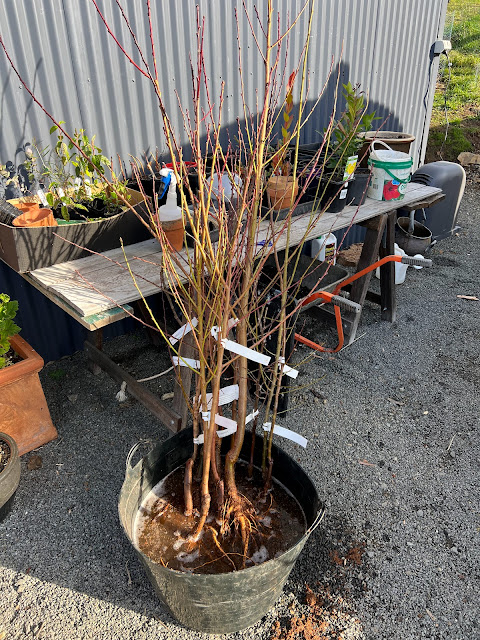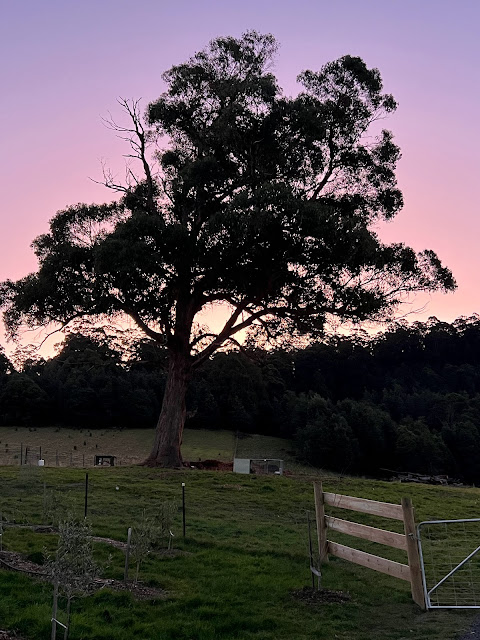The lower orchard …
Creating a stone fruit orchard has always been something of dream of mine. As a young boy I often spent Christmas holidays with an elder sister and her family who lived in a part of the world that had very favourable conditions for growing stone fruit. I recall gorging myself on soft, ripe, yellow peaches from a tree in their garden – an experience I have not forgotten or managed to repeat. The local supplier of the apple trees for our domestic orchard also sells stone fruit trees, so Cath and I ordered a variety of bare-rooted peach, nectarine, apricot and plum trees, and added in some figs, quinces and almonds for good measure to make a total of 13 trees. We thought that this selection was as good as any to start our stone fruit orchard. To add some variety, we decided to move 3 existing pomegranates to join the party. It is not clear that these pomegranates will ever yield any fruit because the Tasmanian summer may not be long enough to allow the crop to set and ripen; we are gambling on global warming coming to our aid!
As everyone knows, the success of an orchard is critically dependent on choosing the ideal location because all these trees thrive in full sunlight and well-drained soil. The sunlight isn’t too much of a problem, but for us drainage is certainly a factor as our clay soil tends to hold water. We settled on the steep-ish slope immediately below the apple orchard. The north-easterly aspect will ensure plenty of sunshine, while the slope should ensure that the roots do not become waterlogged. We were in complete agreement on the location, but disagreed on what to call the new area. I favoured “stone fruit slope” while Cath wanted “lower orchard”. I guess the title of the post gives an inkling as to who won this particular contretemps.
Given the slope on which they were to be planted, this operation wasn’t as simple as it sounds. The holes where they were to be housed were created primarily by digging rocks out of the ground, so there was little or no soil to use for planting. We opted for a mixture of fine crushed rock, simple garden soil and our home-made compost for bedding down the trees. Sounds easy enough, but this mixture had to be carted down the slope for each tree. It took us the better part of a day to complete, but the lower orchard is now in place. They say that planting a stone fruit orchard is an investment that rewards both the senses and the soul; they failed to mention that it also breaks backs.
All the trees are on normal root stock and not dwarf root stock as is the case with our apples. We have therefore allowed plenty of space between them to maximise sunlight and air flow which is important for proper growth and resistance to disease. As a consequence, the lower orchard spans a substantial area that we hope will be brimming with produce in a few years’ time.
The lovely settled weather of the last week has given us some spectacularly clear late afternoons and early evenings.
So inspired were we by the weather and the success in getting the lower orchard settled in, that our thoughts turned immediately to other produce. We have now placed an order with our supplier for 10 hazelnut trees which we will plant in the top paddock adjacent to the site set aside for citrus (another gamble on global warming). This time we have agreed on the location and the name which will be revealed in good time. In the meantime, I am torturing myself with the thought of more holes to dig and more rocks to move …







Comments
Post a Comment